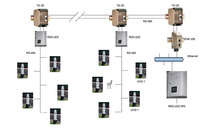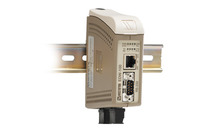Improved railway safety for man and animal

Improved railway safety for man and animal
The wild animals do not regard trains on the railway tracks as their natural enemies; they get used to the noise produced by these machines and accept them as part of their own habitat. Furthermore, the speeds that are developed today by trains, frequently around 160-200 km per hour, exceed the speeds that these animals have become familiar with during their natural existence in forests, on fields or meadows. The time to react, to escape is too short for an animal to give it a chance to survive an encounter with a train. Such collisions are not only fatal for animals but also very dangerous for trains. Many methods were used to solve this problem such as separation grids or above ground passageways for animals but all these solutions resulted in liquidation of natural animal trails leading to environment degradation.
After numerous consultations with ecologists, scientists and experts in the field of wild animal behaviour, NEEL Ltd. in cooperation with Bombardier Transportation (ZWUS) Polska Sp. z o.o. and Forestry Research Institute has developed a state-of-the-art solution to the problem. This unique worldwide animal deterring system uses Westermo TD-29 modems and EDW-100 adapters as a communication basis. It is designed to prevent such game as the roe-deer, the red-deer, the elk, the bison, the wild boar or the fox from migrating through railway tracks directly at the time of a passing train. This system limits to the minimum the loss in the wild animal population caused by collisions with fast moving trains and yet allows these animals to pass across the tracks when there is no danger of such collisions.
UOZ-1 devices operate through sound signals, which deter animals from coming near the tracks. The signals are emitted by the UOZ-1 device for a certain time, directly before a train approaches the site. The animals perceive the sounds as a real warning and react as they do when coming across a natural predator or another danger that they are genetically programmed to avoid.
The essential information concerning the status of selected elements of the structure are transmitted through Ethernet to the controller, located at the station, in the control-diagnostic module MDS-UOZ. This module contains Westermo EDW-100 industrial Ethernet adapter which converts data to RS-485 standard. After analyzing the data obtained from the station and determine the location and speed of approaching train, station PLC sends results to the container PLC via TD-29 modem from Westermo. Data transmission takes place between all attached
devices (multipoint topology) with a speed of 2400 bit/s.
 |
 |
 |
| Application overview View application drawing. |
TD-29 Multidrop FSK-modem. |
|
.jpg) |
||
| Download PDF Full story |
